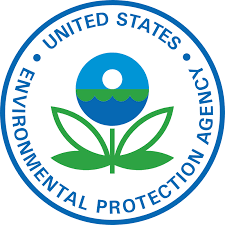EPA Cover-Up. Ohh, Breaking news? Tell me more. Did I get the scoop?
I recently had a conversation with a lead inspector on the Eastern half of the country, and I heard him say a word that piqued my ears. He said that the client needed to encapsulate the chipped paint around a window during a visual lead inspection before the rental property could pass the 4-year lead-safe certification. I quickly asked, “Don’t you mean stabilization?” Encapsulation has a very clear meaning. In the lead world, the intent is where the rubber meets the road. Clearing up confusion is a good thing. Could it be an East Coast thing? Our language is hard enough without mixing up the meanings. So, I revisited my books and I researched it with the EPA.
Words have multiple meanings. Just try the connections puzzle in the New York Times, and you will understand what I’m talking about. It reminds me of when my daughter Athena told me that there was a mistake in her book. They spelled thingers with an F = fingers. Woops, I had a hunch that one would catch up with me one day, and it did.
Allow me to unpack the EPA’s holy trinity of cover-ups: Encapsulation, Stabilization, and Enclosure.
Encapsulation
Encapsulation, by EPA definition, is the act of covering leaded components in a specialized paint-on coating that will last 25 years. This is not your standard house paint. It is critical that the specialized paint is mentioned, or you are stabilizing. Not surprisingly, these lead encapsulation coatings are expensive, have horrible reviews, and do not last as intended. This is a temporizing measure at best, and can be used in the RRP and Abatement world to overcharge and underperform. Not my cup of tea.
Stabilization
In the world of RRP remodeling, we do a lot of lead-based paint stabilization. That means adding a film (Latex paint typically) to cover up exposed lead-based paint to keep a stable barrier between the lead and humans. Keeping a barrier between humans and leaded components so that the two never cross paths is the idea that we can coexist.
Many of us grew up in and live in homes that have been painted with lead. There is no need to condemn them. Stabilizing the leaded components and keeping our houses clean is how we do it. When we disturb paint in pre-1978 homes, we are taking precautions outlined in the RRP program to mitigate the risk. This is also a temporizing measure that requires monitoring.
 What does RRP stand for?
What does RRP stand for?
- Renovation: Remodel homes that were built before 1978
- Repair: Perform small repairs that involve disturbing leaded components in a pre-1978 home.
- Painting: re-painting a pre-1978 era home.
As an RRP Certified contractor, our clear intent is to do just one of those three things. you might say that leaded components are in our way, rather than causing everyone to get sick, or calling in an abatement contractor, the EPA has provided us with specific things we must do to prevent that. Those things are dustless demolition, stabilization, and occasionally enclosure.
Enclosure
Oh great, another “E” word! The EPA definition of Enclosure is: “A rigid, un-permeable material to cover Lead Based Paint,” like new siding over old. RRP folks can enclose, but only when the intent was to renovate. Abatement contractors use this tool when they need to, but again, the intent is to get rid of leaded components. This is a temporizing measure until full abatement can be done.
Abatement
A lead abatement contractor is hired to remove lead components. They do not provide RRP services; they just eliminate leaded components for the sake of eliminating leaded components. Encapsulating can be part of an abatement project is considered a baby step towards eliminating a lead risk. Enclosure is also in their toolbox if needed. Abatement contractors do not stabilize.
Tools to cover up Summary
E
is for Encapsulating. (the specialized paint that is supposed to last 25 years). Don’t be fooled by the hype of these products. Abatement contractors use this occasionally as a temporizing measure. RRP contractors typically stabilize or enclose. I have read nothing positive about using these products (except from the manufacturers).
S
is for Stabilization. Adding latex paint to cover lead paint. Chipped, abraded, friction, or impact areas are a good example of this. Like all cover-ups, this needs to be monitored so that if it fails, you paint again. This technique is used all the time in remodeling. Prep work is where you can get into trouble if you do not take proper precautions.
E
The second E is for Enclosure. This is done by adding new siding over siding painted with lead paint, if it is part of a remodeling project, if the intent is renovation, this process is a great tool. Abatement contractors sometimes use this technique too, but they are only interested in eliminating leaded components, so enclosure is weak sauce for them.
In this case of confused terminology, I think the East Coast Lead Inspector was using the wrong word to describe what he wanted done. Stabilization is probably the right word to use. I corrected him and he confidently told me that I was nuts. As I like to say. “You can lead a horse to water, but a pencil must be lead.”
Please Do Reply! I am not a robot. I talk back and it helps me learn what you want to hear about, click here to email me directly, or call 208-908-4418
If you or someone you know is lead testing or just wants to speak to a trustworthy guy, please contact me. You’ll be glad you did. If you are ready to order some products, use this Lumetallix link or the Amazon Link







0 Comments